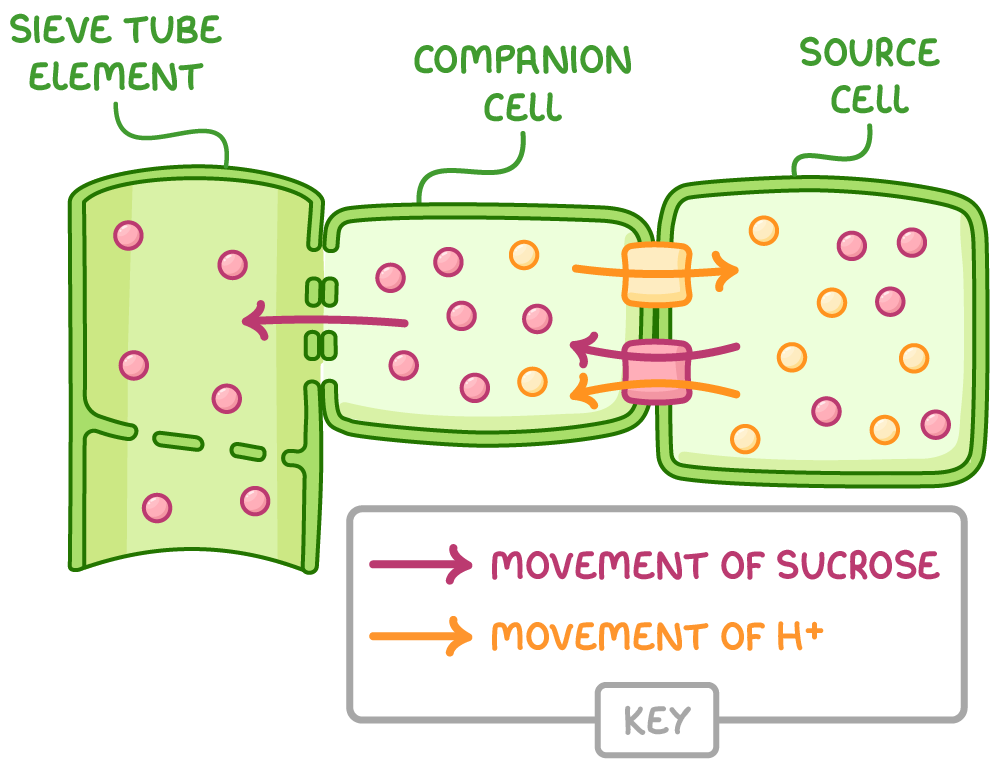Mass Flow Hypothesis
This lesson covers:
- What translocation is
- The mass flow hypothesis
- How substances enter the phloem
The mass flow hypothesis
The mass flow hypothesis proposes that translocation occurs due to pressure gradients.

It is hypothesised to occur as follows:
- At the source, solutes like sucrose are actively loaded into sieve tube elements from companion cells.
- This decreases the water potential in sieve tube elements.
- Water enters the sieve tube elements from the xylem and companion cells by osmosis.
- This increases hydrostatic pressure in the sieve tube elements at the source.
- At the sink, solutes are actively removed from the sieve tube elements.
- This increases the water potential in sieve tube elements at the sink.
- Water leaves the phloem by osmosis, decreasing the hydrostatic pressure at the sink.
- This creates a pressure gradient, pushing solutes from the source to areas of lower pressure at the sink.
At the sink, solutes are actively unloaded from the sieve tube element into companion cells. They can then move into sink cells where the solutes can be used, for example in respiration, or stored.
Active loading into the phloem at the source
To set up a pressure gradient from source to sink, assimilates like sucrose are actively loaded into the phloem.

This active loading occurs as follows:
- Hydrogen ions (H+) are actively transported out of companion cells into surrounding source cells.
- H+ is co-transported along its concentration gradient back into companion cells with sucrose.
- Sucrose can then diffuse along its concentration gradient through plasmodesmata from companion cells to sieve tube elements.
What is translocation?
Translocation is mass flow of assimilates from one part of a plant, the source, to another part of the same plant, the sink.
Assimilates are substances that have been manufactured or modified in the plant, such as sucrose and amino acids, that are transported in the phloem sieve tubes during translocation.
Features of translocation:
- It requires energy.
- It transports substances from sources (where they are made, like the leaves) to sinks (where they are used, like the roots).
- Water provides the medium in which these substance dissolve for transport in the phloem.
- It maintains a concentration gradient using enzymes.